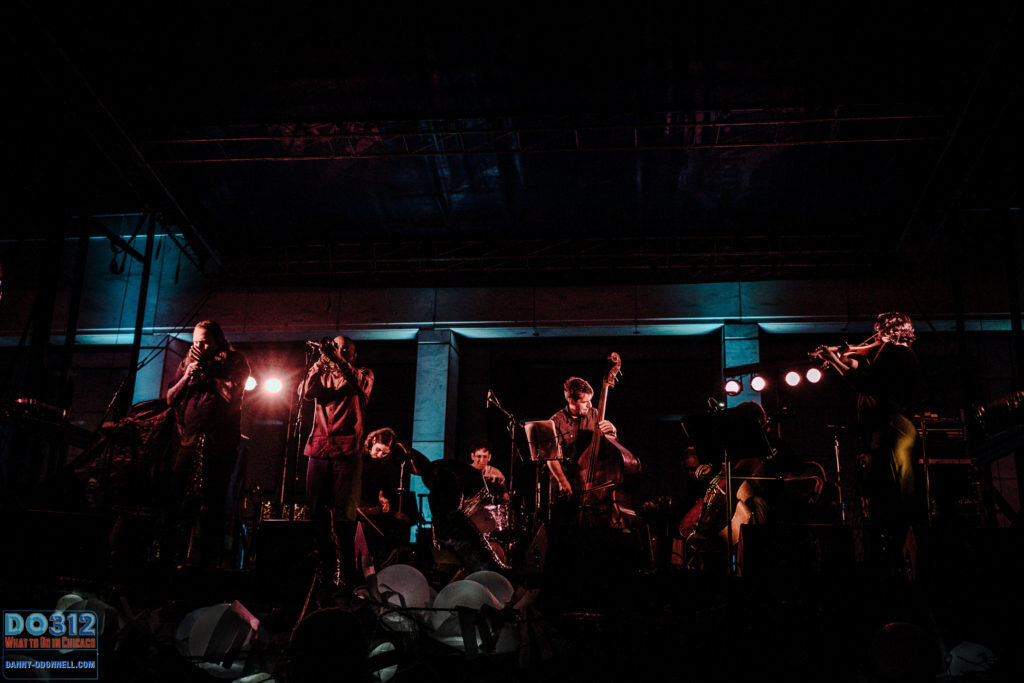The Empty Bottle works with a wide variety of venues for their Presents shows, but perhaps none of them are as intimate and stunning as their Rockefeller Chapel concerts. For EBP this past Friday, Low took to the stage with opener IN / VIA. Both groups used the space to their advantage, crafting stark, emotionally wrought songs that were mollified by the Chapel’s acoustics.
IN / VIA, the solo synth project of Nona Invie, was an apt way to set the tone for Low. With swirling and twirling synth lines that were as mesmerizing as the vocals, IN / VIA created structured soundscapes that moved freely. Synth sounds warm and cool basked in the Chapel’s openness providing a lush backdrop for somber, heartfelt lyricism.
While Low didn’t use synths (their consistent instrumentation is guitar, bass, drums, and vocals), their set followed IN / VIA’s smoothly, with poise and admiration—for their opener, the Chapel, and the listeners. The fact that it was an EBP production was particularly resonant for them, as their first show in Chicago was at The Bottle about 25 winters ago.
Despite it being just the beginning of the cold months, the harmonies of Alan Sparkhawk and Mimi Parker (the group’s core members who are also married) instantly instilled the imagery and feeling of the last bit of snow and ice melting at the end of winter. Their haunting vocals are what really set Low apart, and experiencing these voices live—attached to their sincere sources and heard in the reverberant space—was a highlight of the show.
“It’s such a beautiful space, I can’t say anything to ruin it,” Sparkhawk said simply of the Chapel.
Much of its beauty was manifested in its sonic qualities, but both these and the visual aspects were only accentuated by the lighting that accompanied Low. Frequent collaborator and engineer/producer Tom Herbers (who has also worked with Andrew Bird, Why?, and many others) instead focused on the lightboard, controlling three panels of lights that reacted to the sounds with abstract textures and other visuals. The lighting echoed the evocative, solemn music well, playing a much larger role than lighting usual does at a concert.
About half of Low’s set was made up of their recent album, Septembers’ Double Negative. Sonically, the record is a huge shift from previous records, with different production and recording approaches greatly molding their sound.
But their Rockefeller Chapel concert showed that their distinct songwriting and minimal compositions were still at the heart of this new sound. Sounding more like previous records rather than Double Negative, Low’s feeling and energy is what is most important about their music, and the fact that they can convey that purely no matter the sonic approach is a testament to their genuinity and emotional sentiment.
*A review by Izzy Yellen
*Photos by @bblane_photography
[FinalTilesGallery id='2']













